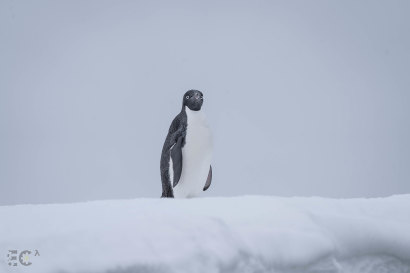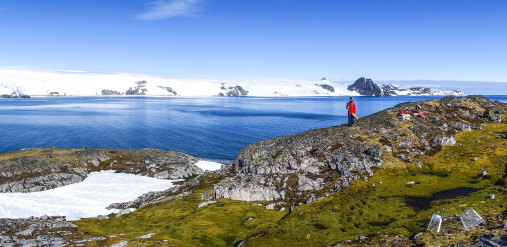
“Whilst ozone is recovering, we’ve seen these four years of ozone holes that have been large but also have [stayed open] into December, which is the thing that’s most concerning for us as biologists,” Robinson said.
“Because that’s when most of the life comes to life in Antarctica each summer. In the winter, everything’s under snow and ice.”

Antarctic animals like this Adelie penguin are at higher risk of suburn and even skin cancers, scientists have found.Credit: Emiliano Cimoli
Robinson and her team, who publish their findings in Global Change Biology on Friday, warn that UV levels had been recorded at dangerously high levels in summer.
“[In] December in the southern hemisphere, the sun is much higher in the sky and the radiation coming down to Earth is higher,” she said.
“We’re seeing a UV index of 14 in Antarctica in December, up from pre-ozone hole levels of six. A UV index of 14 is extreme – what we’d experience during summer in Sydney or San Diego.”
At these levels of UV, humans are at increased risk of developing skin cancers and cataracts. The effects of extreme UV levels on animals depend on their individual vulnerabilities.

The sun beams down on a glacier field site in Antarctica.Credit: Andrew Netherwood
Of concern to researchers is the fact the ozone hole has been open at the start of summer, coinciding with the peak breeding season for penguins and seals.
The team said increased UV radiation in early summer could be “particularly damaging” to penguin chicks and seal pups, both of which are on the ice in late spring.
Loading
“We know that if krill are exposed to high UV radiation, then they will tend to move down deeper into the ocean and the phytoplankton that they feed on will have to make sunscreens in order to avoid damage from the UV.”
The ozone-depleting effects of bushfire emissions do dissipate over time, Robinson said.
“But the problem is that with climate change, one of the things we’re seeing is more frequent bushfires ... we’ll always have bushfires, but we’re having more of them because it’s drier and warmer and the weather conditions are more extreme.
“The biggest thing that we can do to help Antarctica is to act on climate change – reduce carbon emissions as quickly as possible so that we have fewer bushfires, and we don’t put any additional pressure on ozone layer recovery.”
Get to the heart of what’s happening with climate change and the environment. Our fortnightly Environment newsletter brings you the news, the issues and the solutions. Sign up here.









 Add Category
Add Category